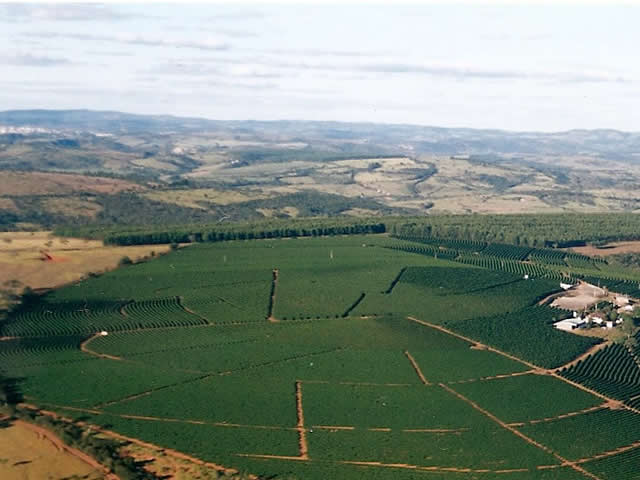The Texeira Family has owned the Vista Alegre farm for nearly a century. They use state of the art techniques in every aspect of their farming and produce a variety of different coffees. Presently the farm is managed by Newton Texeira who was formerly an industrial engineer. What makes this coffee so unique is the way they process the coffee, referred to as Natural Dry Process. However, in order to appreciate this unique method we first need to understand what "processing" a coffee means.
The fruit of the coffee plant, known as the cherry, is picked once it ripens on the branch. The following explains the three most commons ways in which coffee is processed once it has been picked from the tree.

Natural Process
With the natural process the cherries are placed on patios or raised drying beds and dried with all of their layers intact, including the coffee cherry and mucilage, a thin, sweet layer surrounding the bean.
Mucilage is composed of sugars and alcohols which play a role in the sweetness, acidity and overall flavor profile of the coffee. Natural fermentation occurs when the beans are dried with mucilage and cherry intact. The result is the dense heavy body and exotic, wild berry flavors that have become synonymous with natural processed coffees.
Natural process coffees typically have a heavier mouth-feel, lower acidity level and intense, exotic flavor profiles.
Washed Process
The washed process involves completely removing both the cherry and the mucilage from the bean with the use of water.
After being harvested, the cherries are transported to washing stations where they are first weighed and then loaded into a de-pulping machine. The coffee cherries are sliced open and the beans are squeezed out of the cherry leaving the beans with the mucilage as the outermost layer. Mucilage is then removed in fermentation tanks. Lastly, the beans are dried in the sun on patios and raised drying beds.
Washed coffees are generally characterized as being clean, bright and mild.

Semi-Washed Or Honey Process
The semi-washed process, also known as honey process, involves removing the cherry completely, but only partially removing the mucilage which surrounds the bean.
As with the washed coffee process the cherries are de-pulped and left with the mucilage as the outer most layer. A machine then uses bristles and friction to partially remove the mucilage. Semi-washed beans are taken directly to dry in the sun, skipping the fermentation tank and washing stage of the process. During the drying state the remaining mucilage dries into the core of the bean changing the final flavor profile.
When processed properly, semi-washed coffees have an intense sweetness, heightened mouth-feel and round acidity.

Natural Dry Process
The "Natural Dry" process was first developed by Alexandre Gonzaga at Fazenda Vista Alegre with the help of the Andrade Family over twenty five years ago. In this process the cherry is kept alive on the tree well past the time most coffees are harvested. As the cherry dries, the beans continue to mature and acquire additional carbs and sugars.
The end result is a coffee that is immensely deep and sweet after roasting.
Our Vista Alegre is a medium roast and has a delicious brown sugar, and creamy taste. Well balanced and low in acidity, this is perfect for a mid-afternoon sip.







